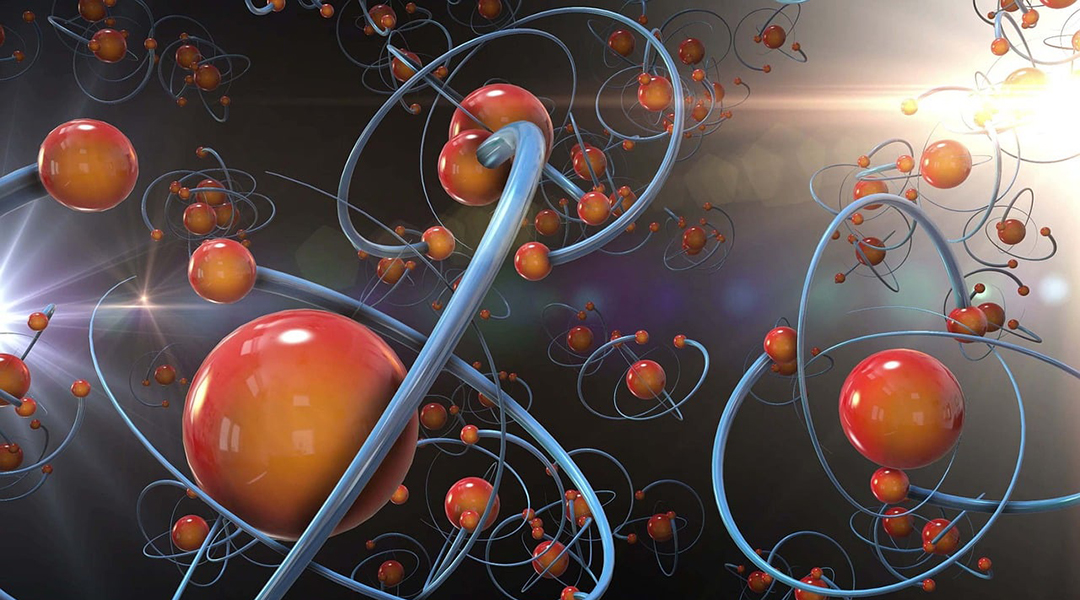Our understanding of the subatomic world is based on the Standard Model, which describes all known elementary particles and their interactions. The success with which scientists have been able to correlate its predictions with experiment has made it one of the most important and foundational theories in physics.
However, even a well-established theory like the Standard Model is not accurate all the time, and there are phenomena that defy or contradict its predictions. This presents an exciting opportunity, suggesting that the theory needs some tweaking, and could lead to the discovery of “new physics”, specifically new types of physical processes, particles, and interactions.
To find out, two teams of American scientists have put forward ideas as to how to search for deviations from the Standard Model using the behavior of atoms and molecules, specifically the aspects of this behavior related to the spin of electrons.
Deviations via electron spin
One can think of electrons as tiny, spinning tops rotating around a vertical axis. The rate at which they oscillate or change direction — a phenomenon known as spin precession — depends on which particles, atoms, and molecules they interact with, and what laws those interactions obey. Studying deviations in electron spin precession could therefore help in finding physics that goes beyond the Standard Model.
In their study published in Science, researchers led by Nicholas Hutzler, assistant professor of physics at Caltech, developed a test to study electron spin in molecules of calcium monohydroxide.
They chose this molecule because one of its electrons is sensitive to an applied magnetic field, and measuring its spin precession under the influence of magnetism could help test the validity of the Standard Model with very high precision.
To do this, they cooled the molecules to near absolute zero (-273 degrees Celsius) to reduce the effect of temperature fluctuations on the experimental results and measured spin precession by irradiating the molecules with electromagnetic waves at a specially selected wavelength.
While the team found no deviations from the Standard Model this time — a sensational discovery that would be on par with the discovery of the Higgs boson or gravitational waves — this new method to search for deviations is in itself a breakthrough.
To get to a point where they might one day be able to find the deviations from the Standard Model in the properties of electron spin precession, Hutzler and his team have proposed improvements to their experiment to increase its accuracy by orders of magnitude, such as using molecules with more sensitive electrons and better shielding from external electromagnetic fields that influence the results.
Going further using entanglement
Building on this work, another team of researchers led by Chi Zhang, the David and Ellen Lee Postdoctoral Scholar Research Associate in Physics at Caltech, proposed using entanglement to further improve the accuracy of the method developed by Hutzler and his colleagues.
Entanglement is an incredible quantum phenomenon in which once interacted objects can store information about each other, even if they are separated by an arbitrarily large distance. Moreover, one can change the state of one object by manipulating the state of another.
In their study published in Physical Review Letters, the team developed a method for entangling the molecules of calcium monohydroxide used by the Hutzler’s group, which, would solve one limitation by making the system less sensitive to fluctuations in external electromagnetic fields, as entanglement influences the behavior of the entire system, therefore increasing the accuracy of measuring the rate of precession of their electrons.
“It’s like anchoring a bunch of rubber duckies together,” Hutzler said in a statement. “If you wanted to measure the movement of the duckies across a tub, they would be less sensitive to the background noise of splashing water if you connected them altogether. And they’d be more sensitive to something you may want to measure like the flow of a current since they would all respond to it collectively.”
“We want to be sensitive to the structure of the molecules,” added Zhang. “Uncontrolled electric and magnetic fields from the experimental setup get in the way of our measurements, but now we have a new protocol for entangling the molecules in such a way to make them less sensitive to the noise.”
Next steps will involve putting these proposals into practice, with the advantage of being that the experiments will not require complex experimental facilities — just cold molecules, lasers, and a detector. This is significant as deviations in the Standard Model are typically studied using huge particle accelerators such as the 27-kilometer-long Large Hadron Collider, which require enormous amounts of money, effort, and time to build and modify.
If these proposals and theoretical calculations turn out to be correct, then scientists will have a very powerful method for studying nature at the most fundamental level.
“With the advantages of entanglement, researchers can push these experiments to probe increasingly exotic sectors of new physics,” Hutzler concluded.
References: Chi Zhang et al., Quantum-Enhanced Metrology for Molecular Symmetry Violation Using Decoherence-Free Subspaces, Physical Review Letters (2023). DOI: 10.1103/PhysRevLett.131.193602; Loïc Anderegg et al., Quantum control of trapped polyatomic molecules for eEDM searches, Science (2023). DOI: 10.1126/science.adg8155
Feature image credit: tommyvideo on Pixabay

















